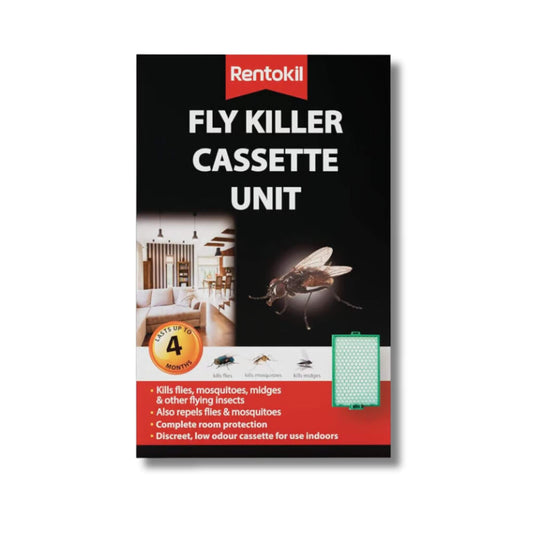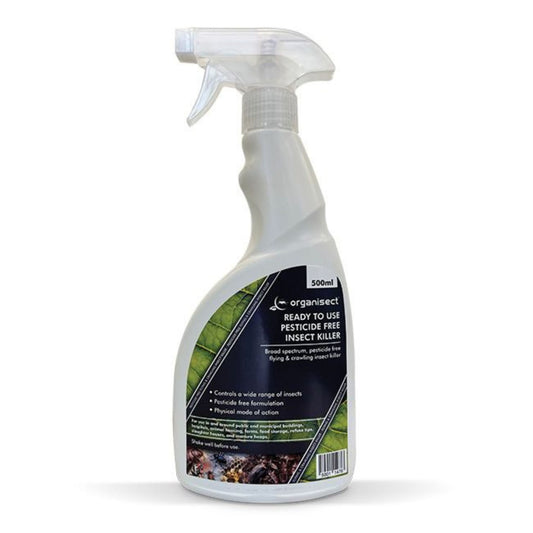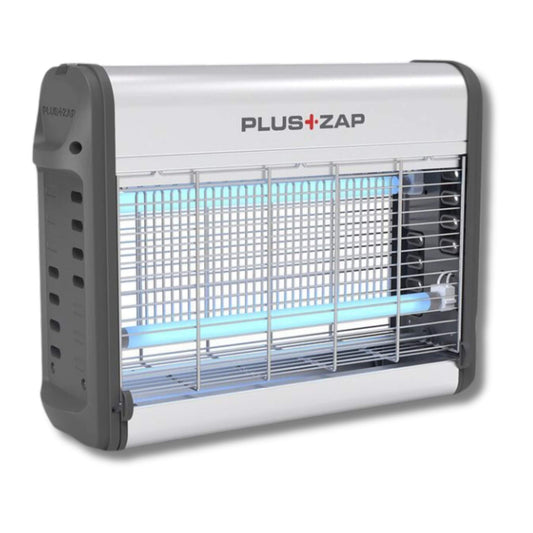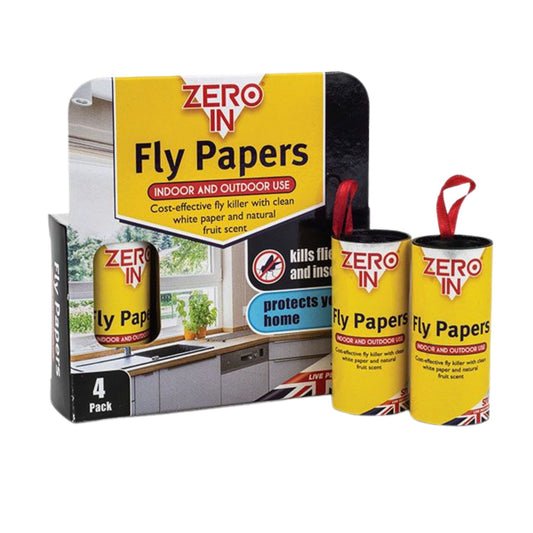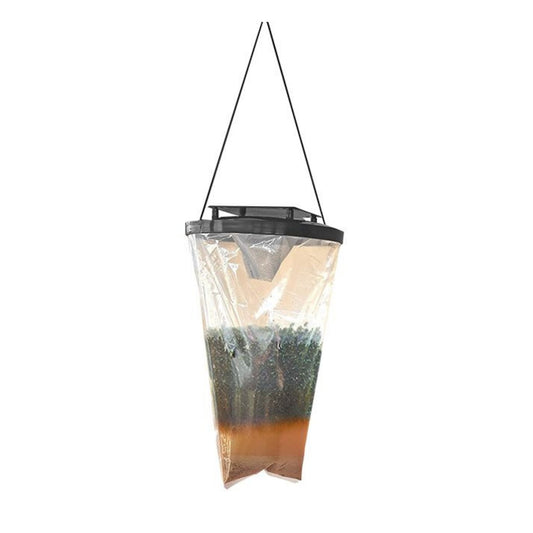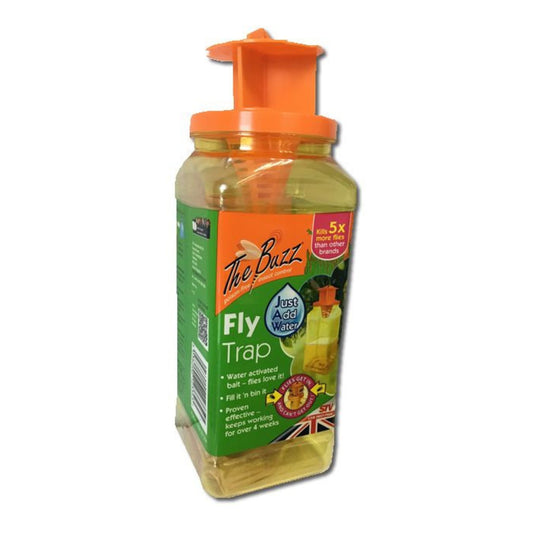
Expert Guide on How to Get Rid of Flies Yourself
Share
Flies can be irritating little creatures that buzz constantly around your head and on your food. Taking a swipe at a fly as it passes by seldom works. It gets worse. Flies can carry bacteria such as Salmonella, Typhoid, and E. coli, picked up from drains, dead and decaying creatures, and animal faeces.
For the sanity and health and you and your family, it is essential to fight fly infestations as soon as possible. With the right products and expert know-how from PestBuddy.co.uk, you can address your fly situation yourself in a fast and cost-effective way.
This expert guide on how to get rid of flies yourself provides a comprehensive, step-by-step approach to everything you need to know. From recognising signs of a fly infestation to choosing the right DIY fly control products you can deploy immediately.
Common Types of Flies
The most common fly is the housefly, which is found all over the world. It’s comforting to know that out of 120,000 species of flies in the world, only a few of these are found in the UK. Here are the common types of flies you are likely to find in the UK:
House Fly
The common house fly is found across the world, in all climates, and anywhere there is garbage and animal faeces. They are the most common fly in the UK and the one you are most likely to see in your home. House flies are usually grey to black in colour, have a yellow abdomen, and a grey thorax with stripes. They are covered in hair, have large red eyes and pointed wings.

Bluebottle Fly
Bluebottles are similar in looks to the housefly but come with a metallic blue colouring. It is commonly found in and around your home, feeding on dead creatures, animal faeces, and your food.
They particularly like rotting meat and carcasses where they lay eggs. Their larvae feed on the decaying matter and then pupate away from the food source before emerging as adults.
While they aid natural decomposition, they are serious disease carriers, spreading bacteria like salmonella and E. coli. As such, good hygiene and proper proofing are essential to prevent infestations. Insecticides are often not appropriate treatments.

Autumn Fly
Similar to the house fly, the male can be identified by an orange abdomen with black stripes and is smaller than the female. Both flies have large, red eyes and clear wings. Autumn flies are usually found around the eyes and noses of cattle and horses.
Cluster Fly
Cluster flies get their name because they live in large clusters within roof voids. They are generally larger than houseflies, with a dark olive-grey thorax covered in golden brown hairs and wings that overlap when they rest.
Cluster flies lay eggs in damp soil and rotting vegetation. Once hatched, the larvae burrow into soil and feed on earthworms.
Adults generally live outside however when the weather cools down, they enter buildings for shelter living in nooks and crannies. This makes them a major nuisance from late Autumn to early Spring.

Fruit Fly
Noticeably smaller, their abdomen is black on top and grey underneath, with a light yellow to tan-coloured thorax. They have large red eyes and transparent wings, and their abdomen hangs downward, making them slower than most flies.

Fly Behaviour
How Do Flies Eat?
Most flies including the house fly cannot bite. Instead, they produce saliva that contains enzymes to break down the food until it is digestible. The fly regurgitates this saliva from its stomach onto its food to start the digestion process. They may help this along by stamping their feet up and down in the liquefied food and then sucking it all up using their proboscis.
During this process, they can contaminate your food with bacteria or diseases from their stomach and feet. This may include food poisoning, Salmonella, Typhoid, and E. coli. Such disease is often picked up from drains, dead and decaying creatures, and animal faeces. Flies are also known to carry and spread the eggs of parasitic worms.

Do Flies Bite?
Fortunately, most flies, including the common house fly, cannot bite and they eat by using their proboscis to suck up food. However, there are some types of flies in the UK that do bite. These include mosquitoes, black flies, horse flies and stable flies.
How Long Do Flies Live?
Adult house flies live an average of between 15 and 30 days, depending on food availability. If young flies are deprived of food, they will die after two to three days.
What Is the Fly Lifecycle? How Do They Reproduce?
Flies undergo a complete metamorphosis. This means that they lay eggs that become larvae or maggots, and then turn into pupa, and finally adult flies. You won’t find house flies in winter, as they are in their larval or pupal stages and hiding in safe places such as compost or rubbish heaps.
In warmer conditions, house flies may complete their metamorphosis in a matter of seven to ten days. This results in up to 20 generations produced annually. In colder climes, metamorphosis can take a couple of months, reducing the number of generations. They lay single white eggs in small piles, and one female can lay up to 500 eggs over a few days. Eggs need to remain moist to hatch.
Blue bottle flies are larger than house flies. They undergo the same metamorphosis process, taking around two weeks to reach the adult fly stage. They lay their eggs in rotting matter, but also in your food, and they may be carrying salmonella. If you swallow the eggs of the blue bottle fly, you could get miasis, as in, you could become the host to a small colony of flies.
Autumn flies are usually seen around the faces of horses and cattle. They breed in animal dung. Their metamorphosis takes between 12 and 20 days. This means they can produce up to 12 generations annually in warmer climates. They feed on plant sugars, animal mucous, and dung.
Cluster flies lay their eggs in soil, and their larvae develop in earthworms. They are sluggish fliers and can be found in large numbers as they overwinter in roof voids.
Fruit flies reach adulthood in seven to thirty days and may live as long as nine weeks. They breed in fermenting matter in breweries, fruit and vegetables, and unclean drains.
Identifying Signs of a Fly Infestation
Seeing a couple of flies buzzing around in your kitchen does not necessarily mean that you have a fly infestation; however, it may be a warning sign. It’s good to be vigilant, as prevention is certainly better than cure. Look out for clusters of small, dark spots on lampshades or other surfaces. Check open drains, gaps in walls or floors, and dustbins. If you find maggots around bin areas, it’s time to act.
Depending on where they have been, flies may be carrying typhoid, cholera, eye infections, dysentery, and more so it's important to take action to stop flies from coming into your house.
Preventing Flies in Your Home
Don't Allow Warm, Damp Conditions
Flies are naturally drawn to warm and moist environments, which provide ideal breeding grounds for laying eggs and easy access to decaying organic matter. Common problem areas include kitchens, bathrooms, compost bins, and drains. To help prevent flies from settling in:
- Fix any leaks promptly and wipe up water spills.
- Ensure good ventilation in damp areas to keep humidity low.
- Regularly empty and clean compost bins and food waste caddies.
- Avoid leaving damp dishcloths or sponges lying around.
By keeping your home dry and well-ventilated, you can significantly reduce the likelihood of a fly infestation taking hold.
Hygiene Tips for Flies
As mentioned, keeping flies away is better than trying to get rid of them. Hygiene is of utmost importance in your home. Here are some tips:
- Store food in containers or in the refrigerator.
- Keep all surfaces clean in the kitchen and pantry.
- Clean all appliances and the surfaces beneath them.
- Keep floors clean, wiping up spillages as soon as they happen.
- Cover bins with tight-fitting lids and empty them regularly, cleaning with a strong disinfectant as you do so.
- Site bins away from doors and windows.
- Clean drains regularly with disinfectant.

Fly Screens
In the summer months, cover your windows with magnetic fly screens. They are attractive, inexpensive, and practical, as they can be easily removed for cleaning and storing in the winter.
Fit screen doors if you live in farmland or other areas where flies are a problem. Retractable screens can be fitted to run horizontally or vertically on small tracks that are quite discrete. Or you can opt for sliding or hinged screens that fit into your door frame.
Fly screens are made of different materials.
- PVC-coated fibreglass looks like nylon mesh and is popular in coastal areas as it doesn’t rust.
- Aluminium screening is more durable than fibreglass. However, it tends to dent and crease over time, unless you opt for heavy-duty aluminium.
- Stainless steel is strong and durable and is a popular option.
- Solar screens serve a dual purpose, blocking the sun and heat as similar well as insects.
Mesh screens come in different weaves; the tighter the weave, the less likely flies will be able to get in. However, as flies are not that small, it’s not advisable to go for a very tight weave, as it may spoil your view.

DIY Fly Control Methods
There are many ways to catch a fly. Some methods are unpleasant, but they do the job. Here are some suggestions:
Fly Zappers
A battery-operated racket that you swipe as the fly comes by. It makes a sizzling noise as the fly gets zapped, but it works, and there’s no mess to clean.

UV Wall-mounted Fly Zappers
Wall-mounted fly zappers (aka fly killing machines) have a blue fluorescent light that is attached to a wall. Flies are attracted to the UV light, but once they touch it, they get zapped and fall into a small tray below. Same sizzling noise. This method is effective and not too difficult to clean. You often see wall-mounted fly zappers at restaurants and other hospitality venues.

Fly Paper Strips
These strips hang from the ceiling, attracting flies with their scent. Once they land, the flies stick and can’t get away. The strips are easy to dispose of and can be replaced every couple of days.

Ultrasonic Fly Repellents
Ultrasonic pest repellents are available online and in hardware stores. These devices are plugged into an electrical socket and emit high-frequency sounds that humans cannot hear. This method may not be suitable in houses that have pets, as their hearing is sensitive and they are likely to hear the ultrasonic sounds. This may cause problems for dogs who are unable to escape the sound and communicate their discomfort.
Homemade Soap Mixture for Flies
A homemade remedy is to place an open jar with a mixture of water and soap in a convenient spot. Flies will be attracted to the scent but cannot fly away once they have landed on the soapy surface.

Bait Fly Traps
Bait fly traps can be bought from hardware stores and online. They come with bait that is left at the bottom of the trap. Once the fly finds its way in and eats the bait, it can’t get out again and dies. All that is needed is to empty the trap and start over again. The trap becomes quite unhealthy, so hang it in a tree a distance away from the house and your outside entertainment area.
Natural Fly Deterrents
On a more natural note, flies don’t like strong-smelling plants such as lavender and basil. A pot of basil on your kitchen windowsill serves a dual purpose, as you can use it in your cooking too. Plant lavender, marigolds, and nasturtiums in your garden to deter flies and other pests.
Citrus smells are also a deterrent to pests. Make a pot pourri with citrus peels and some essential oils such as eucalyptus, peppermint, or lavender. You can wipe surfaces with these oils too.

Chemical Solutions for Fly Control
There are many chemical fly control products on the market including fly sprays and foggers. These use chemicals to target and kill flies.
We recommend considering solutions that use non-toxic chemicals first. These are generally safer in homes, especially around children and pets, provided they are kept out of reach.
Before buying any of these products, you should educate yourself on the ingredients being used, and what the side effects may be. Read the instructions and follow them carefully when using the product.
Fly Sprays
Today’s chemical sprays and foggers are almost undetectable, as they are virtually odourless. Use them with caution, though, as they may have side effects. Asthmatics and people who have known allergic reactions to insecticides should avoid the use of chemicals.
Pesticides contain different ingredients. It depends on the type of pesticide, its concentration, and the length of exposure as to how it is going to affect you. Permethrin is a common chemical used in the control of flies. However, flies are becoming resistant to insecticides and it is better to avoid using them unless it’s necessary.
Large doses of insecticides can cause a range of illnesses. This includes respiratory failure, kidney failure, heart problems, and stomach upsets. In the long run, cancer and neurogenerative diseases such as Parkinson’s.
Various fly sprays exist that kill flies instantly; however, you need to take care when spraying near people and pets or in dining and kitchen areas.
Surface sprays coat the surfaces in your home with insect repellent, and last anything from a couple of weeks to three months. You can use some of them as fly sprays too, depending on their ingredients.
We personally recommend using non-toxic insect killer sprays where possible.
Fly Foggers
Foggers are containers that release all of the pesticide at once, usually over a two hour period. Use foggers in an open room, ensuring that they are at least six feet away from gas or electrical appliances. Don’t use them in enclosed spaces, such as under tables or inside cupboards. Store food in airtight containers to avoid contamination.
Tightly shut all doors and windows before using a fogger. Set the fogger down, activate it, and get out of the room as quickly as possible, closing the door behind you. Stay out of the room for the specified period, and then open the door once the time has expired and air the room thoroughly before entering.
Always do your research before using fly foggers and take all necessary precautions.

When to Use Professional Fly Control Services
One of the first signs of an infestation of flies is an abundance of droppings. Look for tiny black specs on windows, lampshades, doors, walls, and ceilings.
If you find maggots crawling in the bins or anywhere else, you may have a problem. If you don’t get rid of them, you will have a problem when they hatch into adult flies.
Final Thoughts
When you notice a lot of flies in your home or garden, don’t wait to see whether it’s going to develop into a problem. At the rate that flies breed, you will have an infestation in a week or two, so do something immediately.
Try to deter them with the use of strong-smelling plants, herbs, and essential oils. Don’t leave food lying around, clean bins, cupboards, surfaces, and drains.
If necessary use a fly spray and, in extreme circumstances, a fogger. As many fly species live in roof cavities in the winter, it may be an option to place a fogger in your ceiling each winter. If you live on a farm, be sure to turn over any heaps of manure that have been lying around. Compost heaps also harbour flies in the winter months. Turn over the compost every so often to disturb the eggs, dry them out and prevent them from hatching.
At PestBuddy, we're here to empower you with effective, fast and easy-to-use DIY fly control products. Explore our range of products to take control of your pest problems with confidence.

